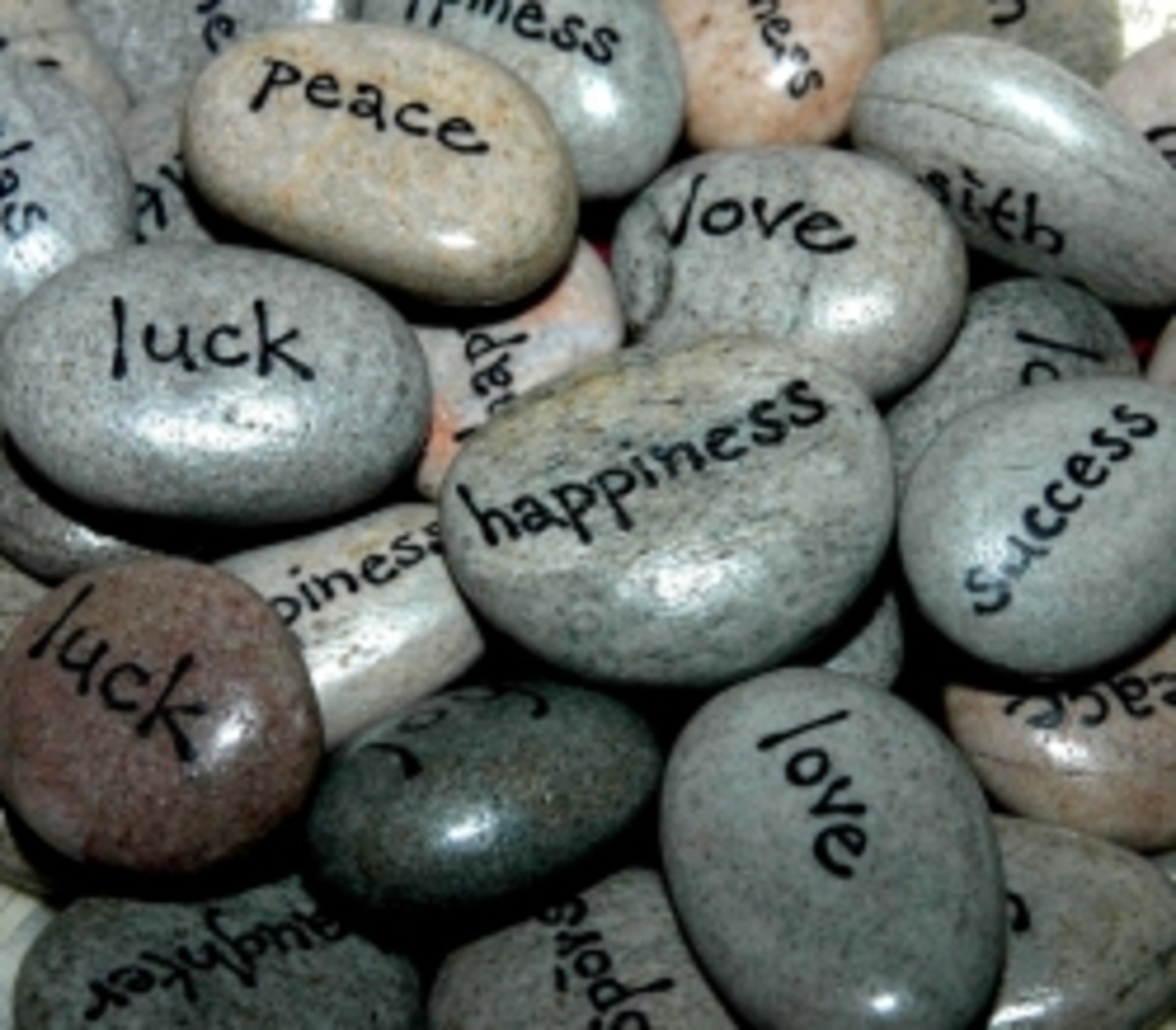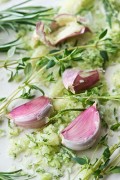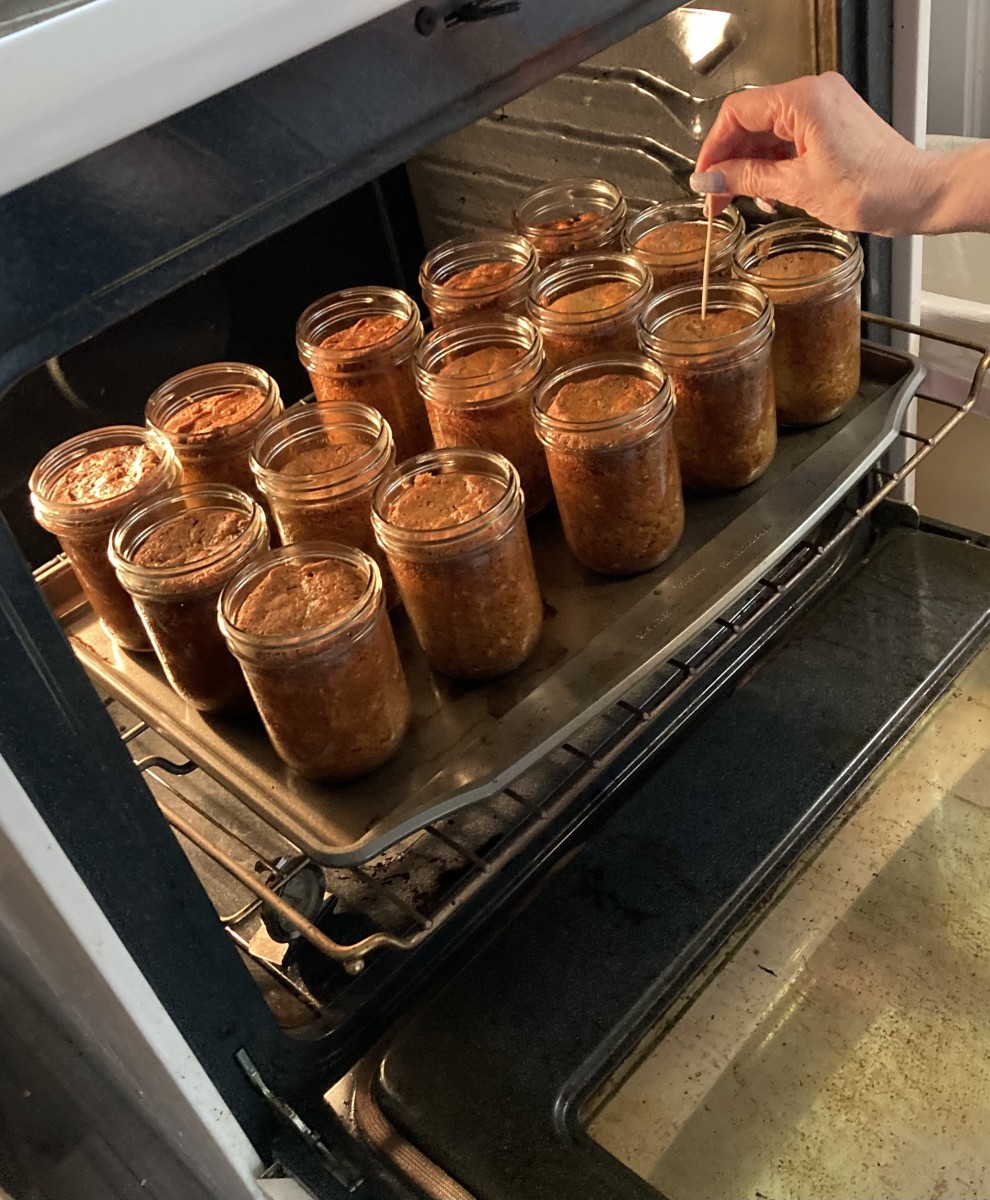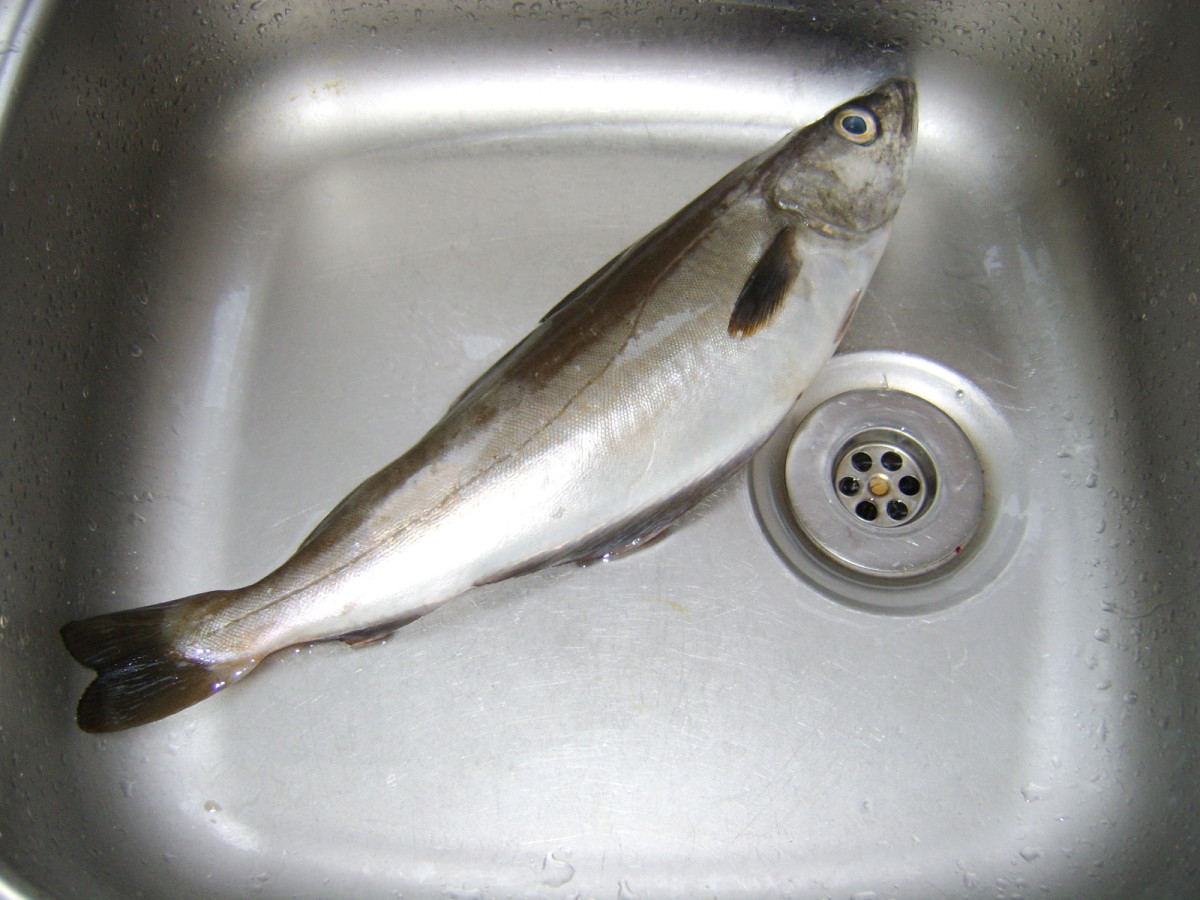How to Cook Beans, What they Are And How to Use Them
A variety of beans soaking
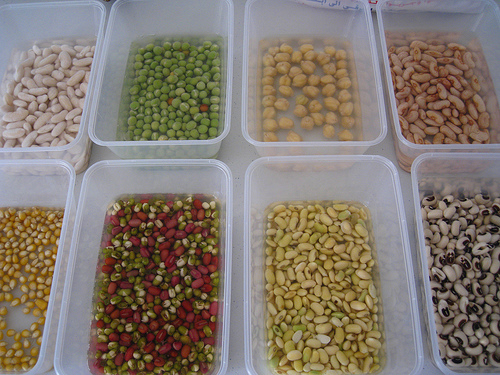
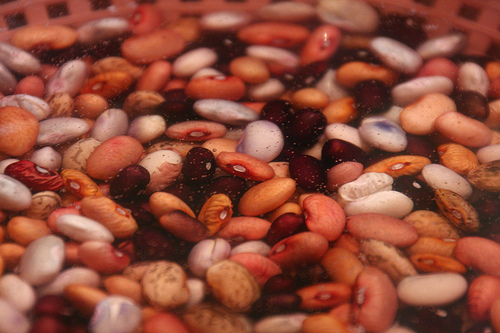
Red Beans and Rice, Soup Beans and Cornbread, Cuban Black Bean Soup, Indian Dahl, French Green Lentils, Boston Baked Beans, Hummus....beans (legumes) are ingrained in cultures around the world. As they should be. Packed with some awesome nutritional punch, they are a delicious staple in many diets. Loaded with vitamins and fiber, easy to store, transport and cook, and inexpensive to boot, beans are the best way I know to pack your diet with valuable nutrients. No more than a few days passes at my house before a variety of bean shows up on my table.
Although many varieties are available canned, which means they simply need to be heated, the taste of canned beans is far short of what can be achieved with a little planning and forethought. Canned beans also often come loaded with a bunch of stuff you just don't need and probably don't really want - the extra sodium, fat and preservatives just aren't luscious. Starting from scratch is far easier than you might think - and I'm going to show you how to do it. So here we go...
Soaking white beans
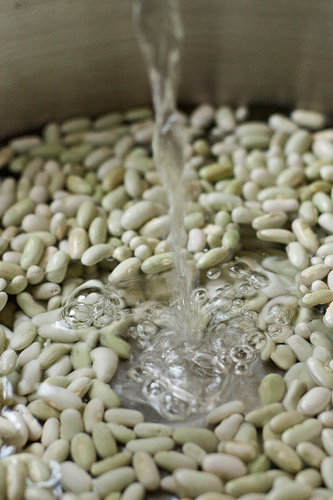
Quick Soak Method
Forgot to soak your beans the night before? I usually do. It's still ok! Rinse them, pick them over and add the water just as if you had remembered. Bring them to a boil, turn off the heat, cover them and let them soak for an hour. Drain them, rinse, and go right ahead as you would if you had a better memory. This is how I roll most of the time.
Start by selecting a market where there is a good bit of turnover - if the packages of beans are dusty, chances are they've been there long enough to have become petrified. Yes, dried beans are dry - but the more time that's passed from the time they were dried, the more additional moisture they've lost. This means several things - mainly that they'll take longer to cook. This means that more of their water soluble nutrients will be lost in the simmering process. The flavor will also be more flat and one dimensional. So look for beans that are fresher.
With that said - beans will last a while in storage - so a couple of weeks won't hurt anything. If you shop every couple of weeks or once a month, load up on different varieties of beans.
The first step is to dump the beans in a colander and rinse them off. They're already pretty clean - but you do want to get rid of any residual dust and dirt they may have brought with them from the field. You also want to check for tiny stones or clods of dirt that show up from time to time. Not often - but a little pepple is the last thing you want to bite. So rinse them off, pick them over, and you're good to go.
Most beans need to be soaked before cooking. The exceptions are lentils, split peas, black-eyed peas and mung beans. Sure you can skip the soaking step - I've done it and there was no Armageddon. But they taste better if you soak them. This is no more difficult than the rinsing. Put them in a heavy saucepan, cover them with several inches of water, and walk away.
Soaking times for beans can vary significantly - but in general the larger the bean the longer the soaking (and cooking) time. If want to get really technical about it you can check out the USDA's website - they have a great simple search engine that will allow you to pull up particulars by type. However - billions of home cooks for centuries have just started the soaking before bed - and when they're ready to cook the next day, the beans are ready to cook. I love how that works. Magic!
Rule of Three
Ok - that's not a rule - I just made it up. But it works. When cooking beans think in terms of threes - soak them in three times their volume of water, cook them in three times their volume of water, the cooked yield will be about three times the dry volume, and you have three critical elements - water, salt and fat.
Soaked Red Kidney Beans
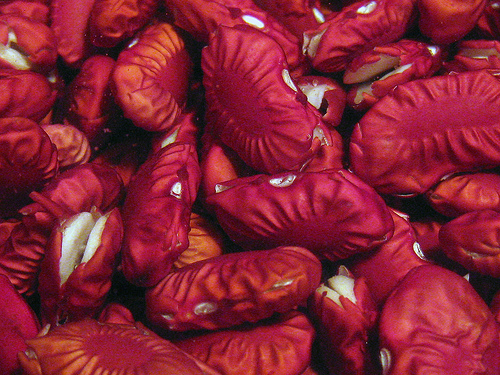
How much do I need?
Dry Amount
| Cooked Yield
|
|---|---|
1/3 cup dried beans
| 1 cup cooked beans
|
1/2 cup dried beans
| 1 1/2 cup cooked beans
|
2/3 cup dried beans
| 2 cups cooked beans
|
1 cup dried beans
| 3 cups cooked beans
|
2 cups dried beans, approximately 1 pound
| 6 cups cooked beans
|
USDA
Once your beans have soaked, they'll look a good bit like your fingertips when you stay too long in the bathtub. That's all right - doesn't matter any more to the beans than it does to your toes. Drain the soaking water off, rinse them real quick, replace the water and you're ready for the stovetop.
Add a touch of salt and fat. Both bring flavor - and can help prevent the beans from boiling over. Bring them to a boil, reduce to a simmer and there you go. You can cover them if you wish - I usually don't - but that depends on how much of the cooking liquid you care to have evaporate during the cooking process. Many of the dishes I prepare are soups - which means I start with more than the Rule of Three amount of cooking liquid (three times the volume of the beans) because I want to end up with lots of broth. If you want drier beans, cover them and watch the simmering carefully so they don't end up too dry. Scorched beans make a mess, and require WAY too much elbow grease to remove the nasty burnt black gunk off your favorite red porcelain enameled cast iron pot. Not that I know from experience.
How long you cook the beans will depend on the type, the soaking time, and how 'fresh' they were to begin with. I found the nifty little cooking times and put the charts up - but please, please keep in mind that there are variables for these times. You want the beans tender, but in most cases not mushy. There should be a little hint of 'al dente' when you test one. The primary rule is cooking anything is to taste - and beans are a great example. Use these cooking times as a guide - but know that they can - and probably will - vary.
Fava Beans
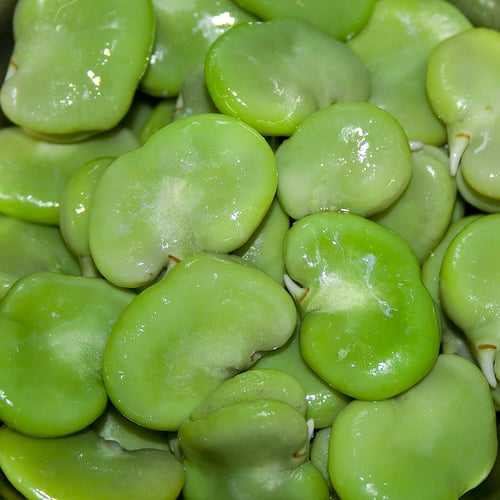
How Long do I Cook Them?
Beans - Soaked
| Stovetop
| Pressure Cooker
|
|---|---|---|
Black Beans
| 1 to 1/2 hours
| 5 to 8 minutes
|
Garbanzo Beans
| 1 to 1/2 hours
| 5 to 7 minutes
|
Great Northern Beans
| 1 to 1/2 hours
| 5 to 7 minutes
|
Navy or Small White Beans
| 1 to 1/2 hours
| 5 to 8 minutes
|
Pinto Beans
| 1 to 1/2 hours
| 5 to 7 minutes
|
Pink Beans
| 1 to 1/2 hours
| 6 to 8 minutes
|
Red Kidney Beans
| 1 to 1/2 hours
| 5 to 8 minutes
|
Large Lima Beans
| 45 mins to 1 hour
| not recommended
|
Baby Lima Beans
| 1 hour
| not recommended
|
Soy Beans
| 3 hours
| 12 to 15 minutes
|
Beans - Unsoaked
| Stovetop
| Pressure Cooker
|
Black-eyed Peas
| 1 to 1 1/2 hours
| not recommended
|
Lentils
| 45 minutes
| not recommended
|
Split Peas
| 45 minutes
| not recommended
|
Mung Beans
| 1 hour
| not recommended
|
USDA
Now I've already mentioned that salt and fat need to be added at the beginning of cooking. You also may have heard that salt shouldn't be added until the beans are cooked because they will be tough. The thought is that salt toughens the skin of the beans, preventing them from becoming fully tender. Nope. 100% not true.
It's not salt that will toughen beans - it's acid. If you're making a dish requiring tomatoes, lemon or lime, vinegar or pineapple - put those in after the beans are done. Acids will toughen the skin of legumes.
Salt however is not guilty. What DOES happen if you don't salt beans during the cooking process is that you have a lot of bland beans floating around in flavored liquid. Salting at the beginning of cooking means that the beans can absorb the salt, resulting in the interior of each and every beautiful little bean tasting just as good as the broth. Salting throughout any cooking process means food tastes seasoned, instead of just salty. Don't underestimate the amount of salt you'll need either - remember the First Rule of Cooking. TASTE! Salt until it tastes good. It's that simple.
Other flavorings or aromatics can be added as well - and the choices are boundless. Think about the properties of what you want to add, and put them in at the right time. For example, if you're making navy bean soup, with about 1 - 1/2 hours of cooking time, then add smoked or salted pork at the beginning, because those can handle the long simmering. Add carrots, onion and celery halfway through, so the veggies are cooked without disintegrating. Aromatic spices can also be added - bay, coriander, cumin, turmeric, rosemary, thyme and cinnamon can handle the heat. Parsley, oregano, and cilantro can't - so add them at or near the end.
As far as the fats go - that's simply up to you. Think of the dish you're making and the flavor profile you want. Beans and pork are a natural - smoked, salted, fresh, sausage - there are tons of combinations and most are fabulous. Southerners use a couple of tablespoons of bacon grease, Italians a touch of pancetta. But try simply drizzling lentils with a rockin' good olive oil. Or hummus and walnut oil. White beans and a spiced olive oil. The more delicate oils will be used at finish - cooking will destroy their flavors. But you can drizzle in a touch of something very neutral at the beginning of the cooking process and add the lovely flavored stuff at service. Beans have the beautiful property of tasting like themselves, while still absorbing other flavors. Use your imagination and you'll be amply rewarded.
Baked Beans
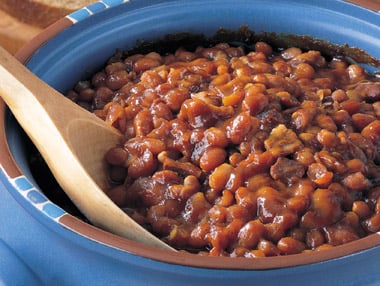
Now I haven't mentioned pressure cookers yet - although the USDA was all over them, and there are cooking times and charts for pressure cooking everywhere you look. The reason is simple - I don't have one.
Mama does however, and she used hers with abandon when I was growing up. I have foodie friends who use them as well, and swear by them. I understand that they result in really yummy beans. The main reason I don't use them is because I like to watch my food while it cooks. Simple as that. I like to see it, taste it, smell it at different times in the cooking process. With a pressure cooker you also can't 'layer' in flavor as you can on the stovetop. Admittedly that's part of my over obsession with food - I love the process of cooking as much as the final result. It's absolutely all right to use a pressure cooker though. If I had one, I'd probably use it all the time.
I can't even begin to comment on cooking beans in the microwave. I use mine to boil water sometimes. If I remember it's there, which I usually don't. I've heard it can be done. But I've heard people have seen Bigfoot too.
I can talk about the oven though. If you're going to bake off a dish that's done in the oven, you'll follow the same steps outlined above. Just be careful at the final stages - you want the beans to be tender, but just barely. Baked beans get that unbelievable crust from the slow dry heat of the oven. The sauce slowly evaporates and coats the beans in an amazing glaze. That's perfect! You want that - but you don't want them overcooked at the outset or you'll have nothing but mush by the time the glaze is done.
If they aren't tender enough though - you may not get them there at all. Many versions of baked beans use tomato in the sauce - and tomato means acid. Remember acids will keep beans from becoming tender - so watch where you have your beans when they go into the oven. The good thing is that there's a pretty large window for this stage on the stovetop. It's not like one minute they're underdone and 30 seconds later they're ruined. Toward the end of your cooking time do five minute taste tests and you'll be fine.
A final word...
All right. Beans are known to cause issues with some people. The reason is that there are some complex sugars in beans known as polysaccharides which are very difficult to digest. However, the intestinal track contains flora which does digest them - and it's those microorganisms which produce the gas.
There are ways to combat this problem. Eating beans in combination with certain other foods or spices is the first. Dairy products such as yogurt or sour cream can help. Spices such as cumin, coriander, kombu, turmeric and caraway can assist. But the main thing that you can do is simply eat more beans - the more you consume the more accustomed your own system becomes, and the more - uh - efficient digestion becomes.
- The Thrillbilly Gourmet
Combining classic technique with everyday food for spectacular results!

